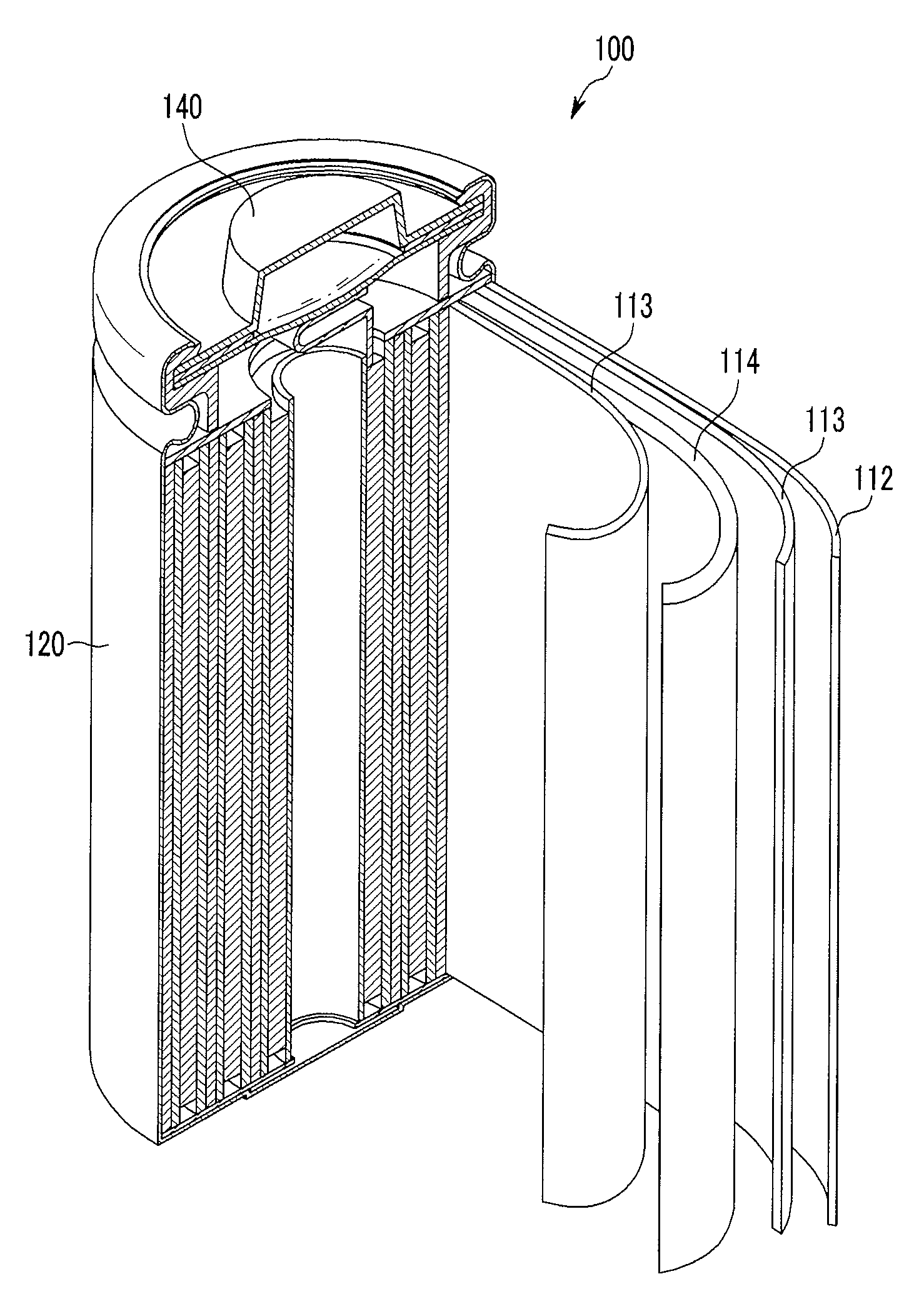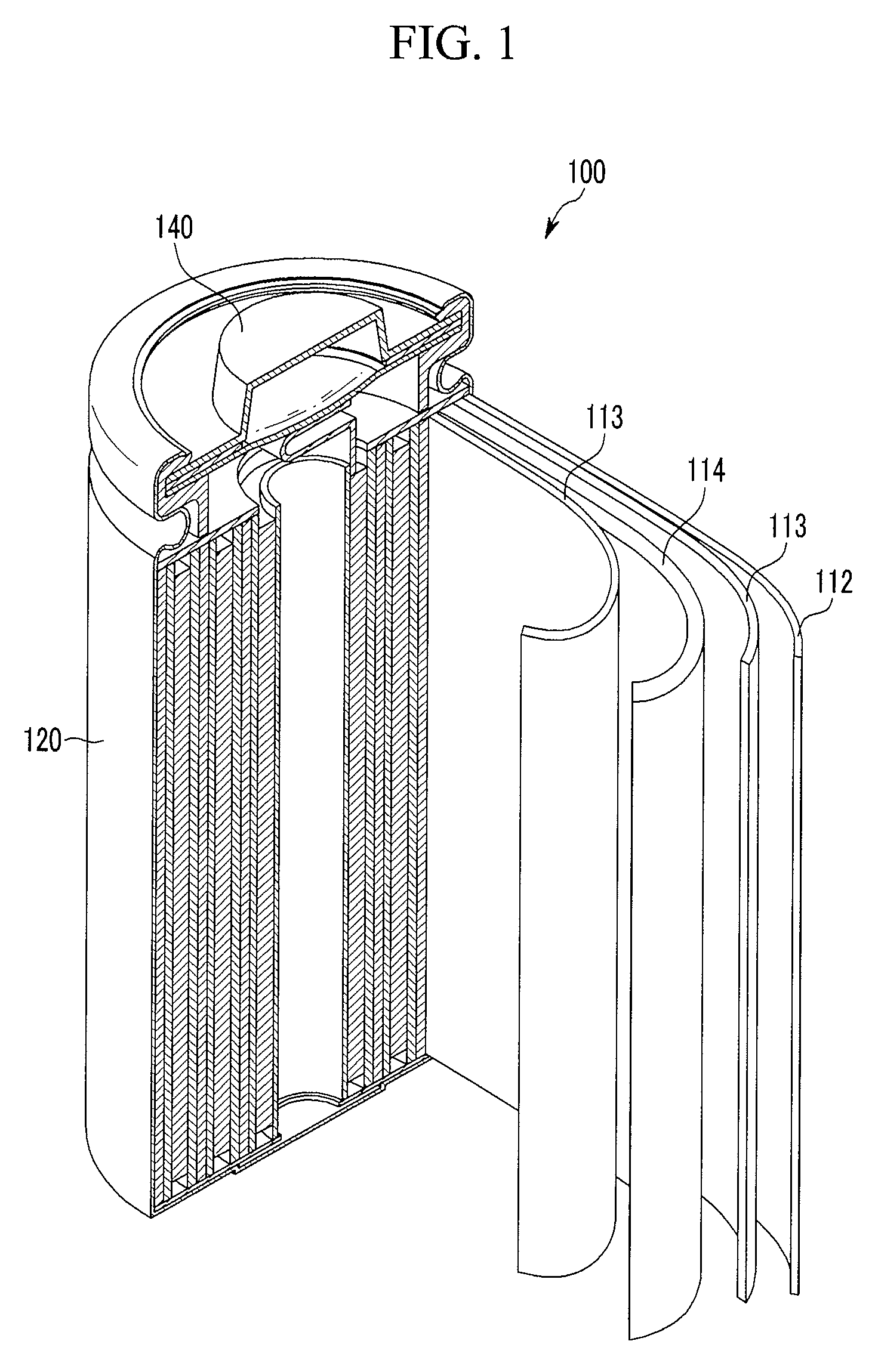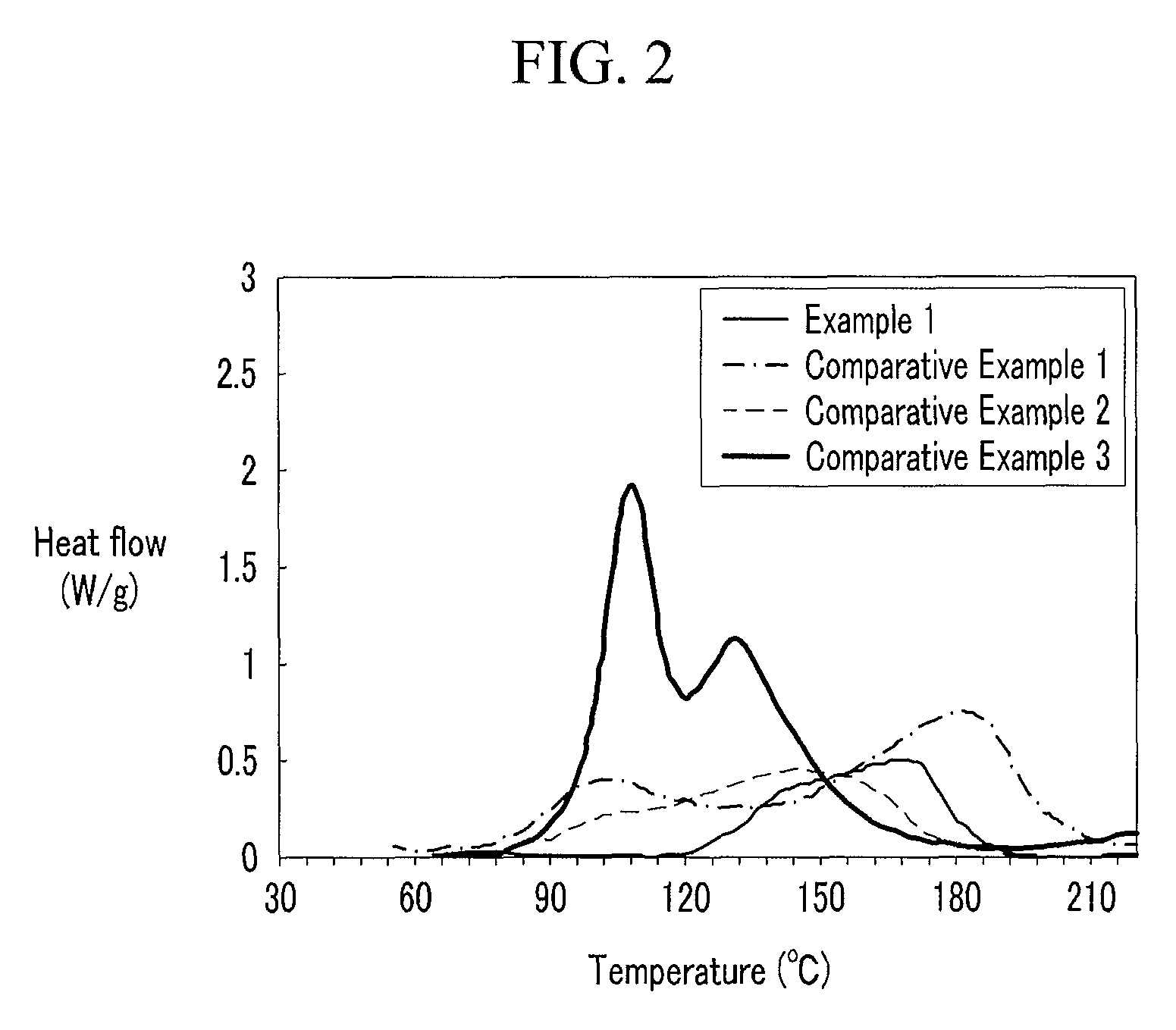Flame retardant electrolyte for rechargeable lithium battery and rechargeable lithium battery including the same
a rechargeable lithium battery and flame retardant electrolyte technology, applied in the direction of secondary cell servicing/maintenance, non-aqueous electrolyte cells, sustainable manufacturing/processing, etc., can solve the problems of significant reduction of the cycle-life characteristics of the resulting battery, increase the cell resistance, and reduce the available capacity of the negative electrode, so as to reduce or eliminate the decomposition of the battery electrolyte solution , the effect of improving the flame retardancy and electrochemical
- Summary
- Abstract
- Description
- Claims
- Application Information
AI Technical Summary
Benefits of technology
Problems solved by technology
Method used
Image
Examples
example 1
[0101]A flame retardant electrolyte solution was prepared with 9 wt % of LiPF6 (1M concentration), 50 wt % of dimethyl carbonate (DMC), 20 wt % of an ionic solution including ammonium cations represented by the following Chemical Formula 32, 10 wt % of trimethyl phosphate (TMP), 1 wt % of LiFOB, and 10 wt % of fluoroethylene carbonate (FEC) 10 wt %.
[0102]
experimental example 1
Measuring Viscosity of Flame Retardant Electrolyte Solution
[0107]Each flame retardant electrolyte solution prepared according to Example 1 and Comparative Examples 1 to 4 was measured to determine the viscosity. The viscosity of each flame retardant electrolyte solution was measured with a rotary viscometer (digital) by monitoring a stress change depending upon frequency, and the viscosity was evaluated. The results are shown in Table 1, below.
experimental example 2
Measuring Retardancy of Flame Retardant Electrolyte Solution
[0108]Each flame retardant electrolyte solution prepared according to Example 1 and Comparative Examples 1 to 4 was measured to determine the retardancy. The retardancy of each flame retardant electrolyte solution was measured by the standard method of the UL 94 flammability test to determine the combustion degree through the flame combustion test. The flammability test was carried out by supporting 4 cm×1 cm glass fibers with 0.5 g of the electrolyte solution, contacting one end thereof with a flame source, observing whether or not it caught fire, and observing the duration of the fire to determine the retardancy of the flame retardant electrolyte solution.
[0109]
TABLE 1Viscosity(cP)RetardancyExample 15Non-flammableComparative Example 13.2Very flammableComparative Example 23.4Self-extinguishableComparative Example 310.3Non-flammableComparative Example 45.6Non-flammable
[0110]As shown in Table 1, the flame retardant electroly...
PUM
| Property | Measurement | Unit |
|---|---|---|
| viscosity | aaaaa | aaaaa |
| dielectric constant | aaaaa | aaaaa |
| viscosity | aaaaa | aaaaa |
Abstract
Description
Claims
Application Information
 Login to View More
Login to View More - R&D
- Intellectual Property
- Life Sciences
- Materials
- Tech Scout
- Unparalleled Data Quality
- Higher Quality Content
- 60% Fewer Hallucinations
Browse by: Latest US Patents, China's latest patents, Technical Efficacy Thesaurus, Application Domain, Technology Topic, Popular Technical Reports.
© 2025 PatSnap. All rights reserved.Legal|Privacy policy|Modern Slavery Act Transparency Statement|Sitemap|About US| Contact US: help@patsnap.com



